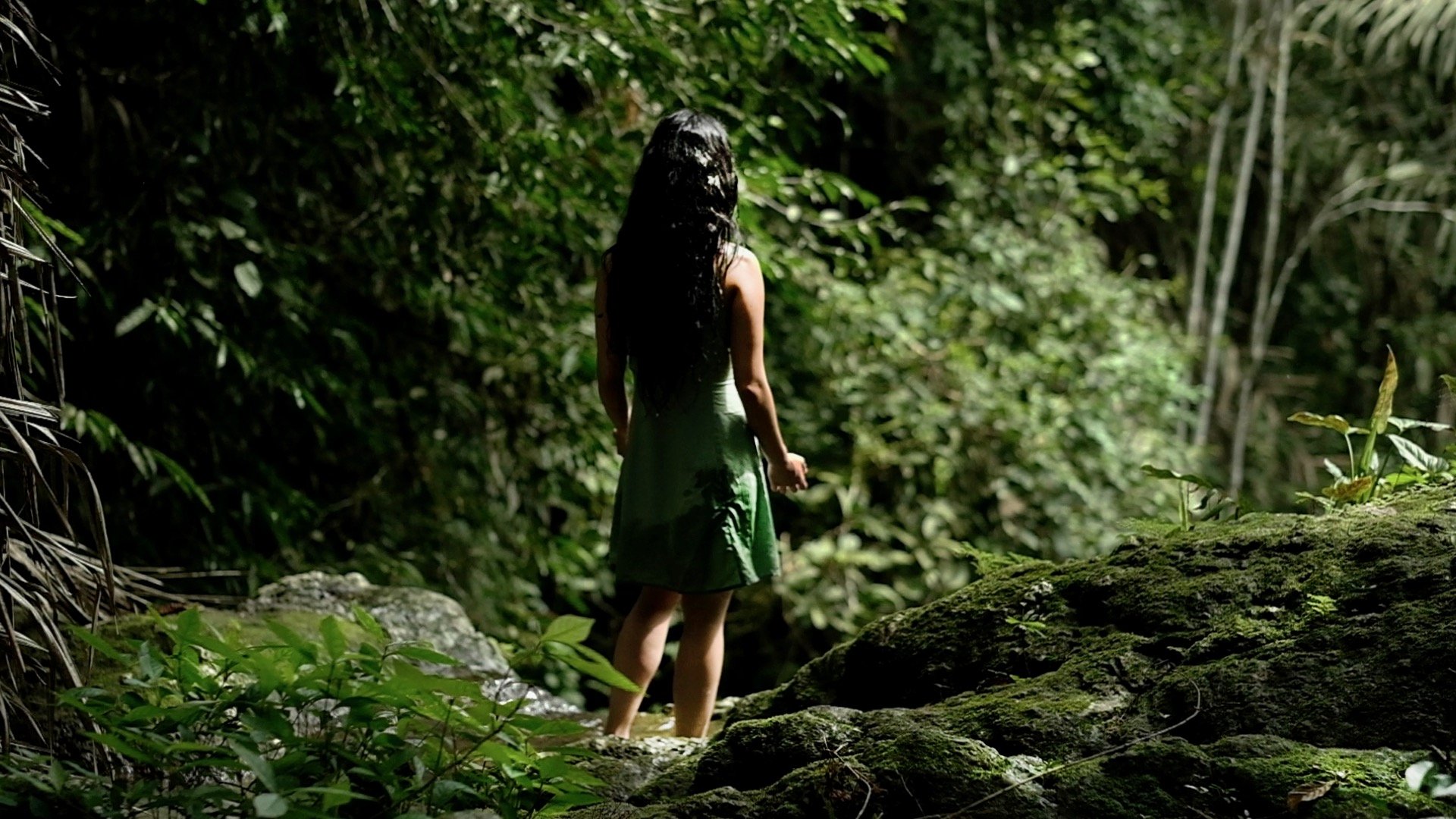
Origin Story
“Kissing Gaia” is based on a series of real-life intimate encounters with Gaia that have taken place in Ecuador starting in 2002. These encounters were triggered by a sacred cactus that grows wild in the mountains. The flesh of this cactus contains one of the most powerful psychedelic alkaloids on earth: mescaline. When this flesh is consumed by people, the sense of separateness dissolves. In other words, it is a door to transcendence. But there is a process involved. It starts with harvesting the cactus with your own hands.
The Stumbling Block
To begin with, nearly every single person who worked on this project already had a close personal relationship with San Pedro. We set out to collectively make a film that was faithful to the internal experiences that this cactus has produced inside our minds. But trying to express something that is ineffable is ultimately an impossible task. That is the inherent fault line in this creative project.
Blurring the Lines
Technically, this is a narrative film. That was the initial idea. But the dynamic changed over the course of its making. To create the film, we created the experience. We went into the mountains to harvest the arm of a wild cactus, brought it down with us into the forest, cooked it over an open fire, and drank it together—cast and crew. And then we filmed the experience.
Disclaimer
At one point, the creators of this film were infected with that impulse that often befalls people who experience a dramatic transformation in life through some particular method—in this case, the ingestion of a psychoactive plant. The tendency is to try to convince everyone else to pursue this same experience through this same method. In a word, to proselytize.
At the very outset of this project, that impulse was still alive. But the actual journey of making “Kissing Gaia” ultimately put that ambition to rest. Like any other plant medicine, San Pedro is a tool—at least, when viewed from a human perspective. And like any tool, its usefulness entirely depends on how it’s used. For some people, it indelibly changes their relationship to the natural world. For other people, it may not.
Open-Source Plant Medicine
The people that comprise the primarily-Ecuadorian cast and crew of this film have sat in ceremony with indigenous healers, non-indigenous healers, and alone. None of us claim ownership over San Pedro or any other plants, nor are we willing to exclude any plant from our lives merely on account of our ethnicity—indigenous or non-indigenous. It is our firmly-held belief that plant medicine is open-source. We have greatly learned from ancient traditions related to this plant, and we are likewise committed to developing a relationship with it on our own terms.
Jerry Toth, Writer & Director
Jerry is a career rainforest conservationist who has lived primarily in South America since 2001 and has resided in Ecuador since 2006. His own experiences with San Pedro, which date back nineteen years, inspired him to co-found a nonprofit conservation foundation (Third Millennium Alliance) and a 1,500-acre rainforest preserve in Ecuador. He is also a cacao farmer and the co-founder of an Ecuadorian chocolate company called To’ak. His work has been featured in National Geographic, Forbes, Fortune Magazine, VICE Magazine, Robb Report, and the Los Angeles Times, among others. For more background on his relationship to Echinopsis pachanoi, check out “DIY Mescaline: How to Explore San Pedro Without a Guide.” The rest of his extensive publications on this subject, which have garnered 400,000 readers in the past three years, are listed in Re-Wilding.
Nabilia Ganem, Actor
Born and raised in Venezuela, of Lebanese ancestry, previous lived in Ecuador and now lives in Spain. An actor since she was twelve years old, Nabilia has appeared in over fifty commercials, three short films, and she plays the lead role in a feature film that is currently in post-production. If you follow her on Instragram, you see the persona of a fashion model. Beneath that external veneer, she is a woman on a profoundly intense and dedicated spiritual path. Over the course of shooting this film, she lived the journey that her character went on. The camera was merely there to capture it on film. You can find her on Instagram at @nabiliaganem.
Camilo Coba, Director of Photography & Post-Production
Camilo is an ascending star of the Ecuadorian film community. He has worked as the Director of Photography on five feature films and forty short films. He has also directed one feature film and eight short films. He studied cinematography at the Universidad del Cine (F.U.C) in Buenos Aires and later finished at the Universidad San Francisco de Quito in Ecuador. Last but certainly not least, he also has an intimate personal relationship with Huachuma, which he credits with profoundly influencing the course of his life. You can follow him on Instagram at @olimac10c.
Full Cast & Crew
Written & Directed by Jerry Toth
Produced by OLIMAC
Starring Nabilia Ganem
Cinematography by Camilo Coba
Editor & Conceptualization: Pablo Hurtado
Director of Editing & Post-Production: Camilo Coba
Executive Producers: Michael Lloyd Gerlach, Steven Potter & The Zanon Brothers
Assistant Director: Claudia Hidalgo
Photographer: Nicolás Riofrio
Focus Puller: Pablo Secaira
Casting Director: Julia Silva
Makeup Artist: Lilu Ramos
Wardrobe Stylist: Lila Penagos
Colorist: Jota Salazar (Kadabra)
Sound Design and Mix: Nicolás Fernández (Ruido)
Music: “Gnossienne No. 3” Erik Satie (NeoSounds)
Narration: Alan Watts (Alan Watts Organization)



